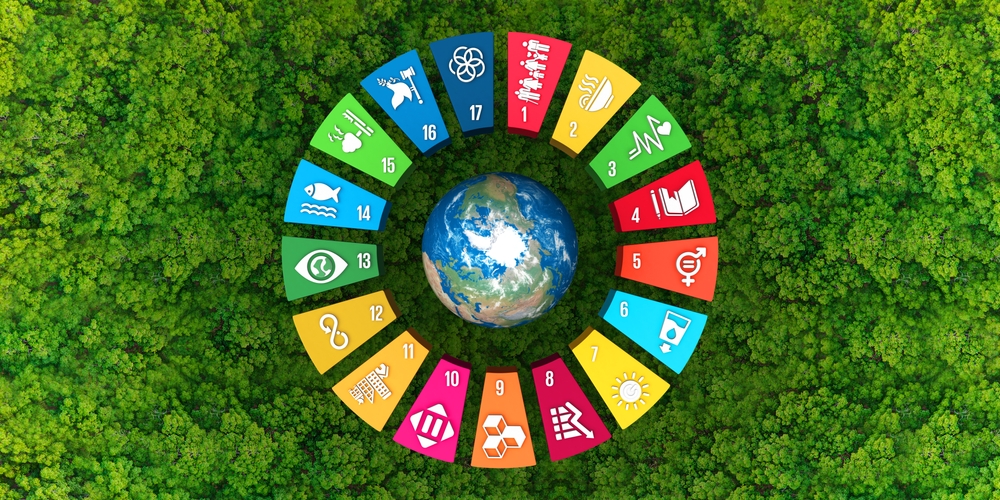I wrote about Sustainable development goals (SDGs) in a previous blog post a while back. Since then SDGs have massively come into prominence and are a key way that organisation’s outline what areas of sustainability are important to them on websites, corporate reports and other communication media. They have been a massive hit! Take a look at just about any organisation’s sustainability strategy and you will see relevant goals identified. This comes from the fact that they are noticeable and are internationally recognised. To find out more about SDGs you can view my blog post HERE.
But how can you implement SDGs in an organisation? Well there are guidelines to complete this in a guide known as the ‘SDG Compass’. The SDG compass breaks down the process into 5 key steps. Let’s take a look at each step and briefly work out what is required.
Step 1 Understanding the SDGs
Firstly organisations must get to grips with the SDGs. Initially this involves understanding the business case that they bring such as:
- Identifying future business opportunities
- Increasing the value of corporate sustainability work that has already been undertaken by the organisation.
- Improving relationships with stakeholders
- Using a recognised framework and shared purpose.
Step 2 Defining priorities.
Next, we need to consider the value chain of the organisation. The value chain is basically the lifecycle from extraction of raw materials to the end of a product’s life. Once this has been mapped relevant SDGs can be chosen. These surround sustainability issues that are currently being done well but could be improved or have a negative impact (something to improve where the organisation is not doing too well from a sustainability perspective).
Step 3 Setting goals
The next step is to set a number of sustainability objectives linked to the chosen SDGs. For each objective indicators of performance should be developed and tracked (more on indicators can be found HERE). This involves understanding the current baseline for the objective (so where you are at the start) and then developing the objective relative to that baseline. The compass then states that the organisation announces its commitments to the SDGs this could be done in various ways such as on an organisation’s website.
Step 4 Integrating
A key part of any sustainability strategy is to ensure that it is integrated into all aspects of the organisation. Common ways to complete this include creating a shared understanding of how progress towards the chosen SDGs add organisational value and integrating SDGs into performance reviews and remuneration schemes (much like financial performance). This step also cover the importance of ensuring that meeting the SDGs is undertaken by not just sustainability department but others in the organisation, such as those in operations or human resources. Collaboration is also emphasised in the SDG compass as key to reaching chosen SDGs.
Step 5 Reporting and Communicating
The final stage of the Compass covers effective reporting and communication. There are many ways that this can occur such as by developing a corporate social responsibility (CSR) report. A standardised approach to such reporting is found in the global reporting initiative standards (GRI).
Final Note
Although the SDG compass has been around for a while now, it provides an effective approach to identifying and implementing SDGs within an organisation. I have provided a basic summary of it above. If you would like to find out more you can download a copy of the Compass HERE.
John Binns BSc (Hons), MSc, MISEP (formerly IEMA)

With over 19 years’ experience working in environment management, John Binns BSc (Hons) MSc MISEP (formerly IEMA) is an experienced environmental tutor and consultant with knowledge of health and safety management.
